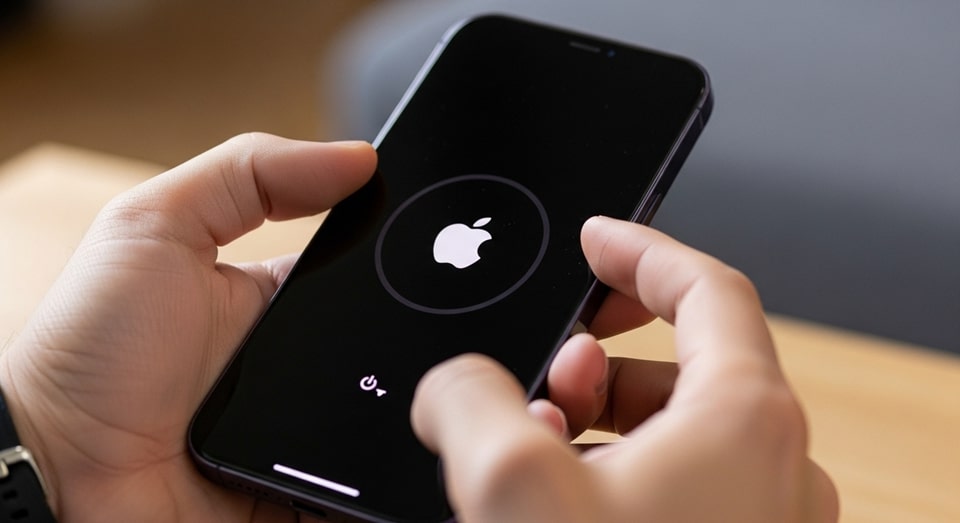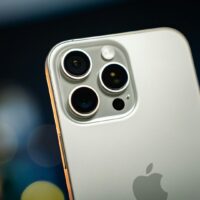
The iPhone 8, introduced in 2017, remains one of Apple’s most referenced compact models because of its classic design, reliable performance for basic tasks, and widespread presence in the used market. This comprehensive guide compiles verified specifications, clarifies software and support status, explains battery and repair considerations, and provides a practical, step-by-step checklist for anyone buying, maintaining, or selling an iPhone 8 in 2025.
Core technical specifications and what they mean
Release and overview
The iPhone 8 launched alongside the iPhone 8 Plus and iPhone X as Apple’s incremental refresh of its numeric line. It kept a compact 4.7-inch form factor, introduced glass front and back with wireless charging support, and shipped with the Apple A11 Bionic chip. These choices optimized the phone for single-handed use while adding modern features like AR capabilities through improved processing power.
Display and design
The phone uses a 4.7-inch Retina HD LCD with a pixel density suitable for everyday tasks and a color profile tuned to True Tone and wide color (P3). The glass back and aluminum frame gave the device a more modern look than prior generations, and the physical home button with Touch ID remained a signature feature for users preferring fingerprint authentication over face recognition.
Processor, memory and storage
At launch, the iPhone 8 was powered by the Apple A11 Bionic chipset, a six-core SoC that brought considerable single-core performance improvements relative to previous models. Standard RAM allocations were modest by modern standards, and storage options typically included 64 GB and 256 GB variants. For day-to-day tasks such as browsing, messaging, streaming media, and light app usage, the A11 still performs adequately.
Camera, audio and media capabilities
Main camera performance
The rear camera is a single 12-megapixel sensor with optical image stabilization on certain models and advanced image processing capabilities introduced at the time. It supports 4K video capture, high frame rate slow-motion, and improved color reproduction because of the A11’s image processing pipeline. For casual photography, it remains serviceable though it trails contemporary multi-sensor arrays in dynamic range and low-light performance.
Front camera and video
The front-facing camera delivers reliable selfies and supports FaceTime at standard resolutions. It does not include advanced depth mapping sensors found on later iPhone models, so portrait mode effects were enabled primarily through software approximations and secondary processing.
Battery, charging, and practical endurance
Battery capacity and typical runtime
The iPhone 8 originally shipped with a modest battery capacity. Real-world endurance depends heavily on OS version, background tasks, and battery health. Over time battery capacity diminishes, and users of older iPhone 8 units often see reduced maximum daily runtime—especially if the device has not had a battery replacement.
Charging: wired and wireless
The device supports wired fast charging using higher-wattage adapters (sold separately) and Qi wireless charging thanks to the glass back. Wireless charging remains a convenient feature for those with Qi chargers, but wired fast charging provides the quickest replenishment when available.
Battery health and replacement considerations
Apple and third-party repair shops provide battery replacement services. Replacing an aged battery restores much of the phone’s runtime and can significantly improve perceived performance if the device was previously throttling to preserve battery life. Buyers of used iPhone 8 devices should check battery health percentage and service history before purchasing.
Software support, updates, and vintage/obsolete status
iOS support history
Over its lifetime, the iPhone 8 received multiple iOS major releases and security updates. Apple’s update cadence historically delivers years of support, but as devices age they eventually transition to a vintage or obsolete service status—meaning official repairs and parts may become limited or unavailable from Apple stores in some regions.
Understanding vintage vs. obsolete classification
Apple classifies products as vintage when they have not been sold for over five and less than seven years; obsolete classification generally follows after seven years. When a device enters these categories, official in-store repairs and parts may be restricted, prompting users to weigh repair options carefully or rely on reputable third-party technicians for maintenance.
Practical software implications
Even if a device can run a recent iOS build, compatibility with newer app features and security updates becomes increasingly limited as time passes. Users relying on older iPhones for critical tasks should monitor support timelines and consider upgrading when security patches cease.
Repairability and parts availability
Common hardware failures
Typical issues that arise with aging iPhone 8 units include battery degradation, glass back or screen cracks, degraded speakers, and aging fingerprint sensor performance. Because the iPhone 8 uses glued glass surfaces, some repairs require careful disassembly and replacement parts that match Apple’s tolerances for fit and finish.
Where to get parts and service
Apple continues to provide parts and service for some older models while they remain classified as supported; once vintage or obsolete status is applied, official parts availability can be restricted. In these cases, authorized independent repair providers and experienced third-party technicians often supply compatible parts and skilled repair work. Verify part quality and warranty before committing to non-Apple repairs.
DIY repair: risks and recommendations
While some users opt for do-it-yourself repairs using aftermarket components, DIY repairs carry risks including water-resistance loss, sensor misalignment, and accidental damage. If you choose DIY, use reputable parts, follow trusted repair guides, and keep backups of data before attempting hardware fixes.
Buying a used iPhone 8 in 2025: inspection checklist and price considerations
Pre-purchase checklist
When evaluating a used iPhone 8, inspect the device systematically. Check exterior condition for dents or glass damage. Test the screen for dead pixels, verify the touch response and 3D Touch behavior, and confirm the home button/Touch ID function. Ask the seller about battery health and request a proof of purchase if available to verify activation and theft history.
Functional tests to run
Test Wi-Fi and cellular connectivity, pair with Bluetooth accessories, check the camera front and rear, record a short video to verify audio capture, and confirm speakers and microphone performance. Boot the device and confirm there are no unexpected restarts or thermal issues under modest load.
Price guidance and negotiation points
Pricing for used iPhone 8 devices varies by condition, storage size, and local demand. If the battery needs replacing, factor that cost into the offer. Devices with intact screens, functioning Touch ID, and recently replaced batteries command higher prices. If Apple has designated the specific variant as vintage or obsolete in your region, use that information to gauge long-term repair costs and residual value.
Security, privacy, and data transfer best practices
Preparing a used device for transfer
Always ask the seller to sign out of iCloud and remove Activation Lock before completing a sale. If you receive a used iPhone, confirm Activation Lock is removed by attempting to set up the device from factory settings. Back up any data you plan to keep and ensure the device is reset to factory defaults before transferring ownership.
Protecting personal data
Use the built-in device encryption and secure passcodes to protect personal information. Keep Find My iPhone enabled when the device is active under your Apple ID to help recover the device if lost or stolen. Consider enabling two-factor authentication on your Apple ID for enhanced account security.
Transferring data to a new phone
For users upgrading from an iPhone 8 to a newer iPhone, Apple’s quick start and iCloud backup tools streamline transferring apps, settings, and messages. Local encrypted backups via a computer are another reliable method for preserving a complete snapshot of the device before migration.
Repair and maintenance: practical tips to extend usable life
Battery maintenance tips
To maximize battery life, avoid extreme temperatures, update to stable software builds, and adopt moderate charging habits—partial charges are often better than constant full cycle charging. If battery health becomes low, prioritize a replacement using quality parts to restore accepted runtime and peak performance.
Physical protection
Use a protective case and screen protector, especially with older devices where glass back or front replacement may be costly. Protective accessories reduce the likelihood of frame damage and preserve resale value.
Storage and software hygiene
Remove unused apps, keep available storage above critical thresholds to allow the OS to operate efficiently, and periodically audit background app refresh settings. Apply updates recommended by Apple until your device is no longer receiving official patches.
When to replace an iPhone 8: signs, alternatives, and migration strategy
Signs it’s time to upgrade
Consider upgrading when the device no longer receives security updates, battery replacement is no longer practical or cost-effective, performance under your everyday workload is noticeably degraded, or key apps require a newer OS version. Another signal is when repair costs approach or exceed the device’s resale value.
Choosing a replacement
If you decide to upgrade, compare current offerings that match your priorities. Compact users may prefer later “a” series models or modern small-form iPhones; those needing stronger cameras or longer support windows should consider more recent mainstream models. Evaluate software support timelines to ensure you get a multi-year security update window.
Migration strategy
Back up your iPhone 8 to iCloud or via an encrypted local backup, sign out of services, and use Apple’s migration tools to restore to a new device. Test critical workflows on the new device to confirm compatibility before wiping or selling your old phone.
Detailed checklist: 7 things to verify when buying a used iPhone 8
- Battery health and charge cycles: Ask for the battery health percentage in Settings and consider replacing batteries below a healthy threshold. A new battery can dramatically improve device utility and is cheaper than many other repairs.
- Activation Lock status: Confirm the device is not linked to the previous owner’s Apple ID and that Activation Lock has been removed to avoid being locked out after purchase.
- Physical condition: Inspect for screen cracks, frame bends, and back glass damage. Cosmetic damage affects value and may indicate rough handling that could cause hidden failures.
- Touch ID and sensors: Test the home button’s touch response and fingerprint recognition; sensor failures can be costly to repair properly.
- Camera and audio function: Verify front and rear camera capture, video recording, speaker output, and microphone quality with real test recordings.
- Connectivity checks: Ensure Wi-Fi, Bluetooth, cellular calls, and data are functioning. For 4G LTE users, confirm the device supports your carrier’s bands.
- Price vs repair cost: Estimate repair costs for any observed issues and compare to the asking price to determine if the purchase is worthwhile.
Conclusion
The iPhone 8 remains a practical and familiar device for users who value compact design, straightforward functionality, and the classic Touch ID experience. While it can still meet basic daily needs, careful attention to battery health, software support status, and repair options is essential when buying or maintaining one in 2025. Before purchasing used units, use the checklists and tests outlined above to evaluate condition and future repairability. For owners considering continued use, replacing an aged battery and applying prudent maintenance will extend usable life. For those preparing to upgrade, backing up and using Apple’s migration tools make the transition smooth. Whether you keep, repair, or replace an iPhone 8, informed decisions—grounded in verified specifications and practical checks—ensure you get the most value from the device.










